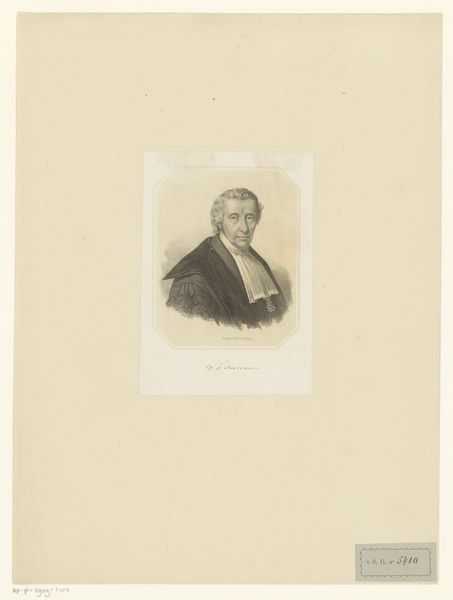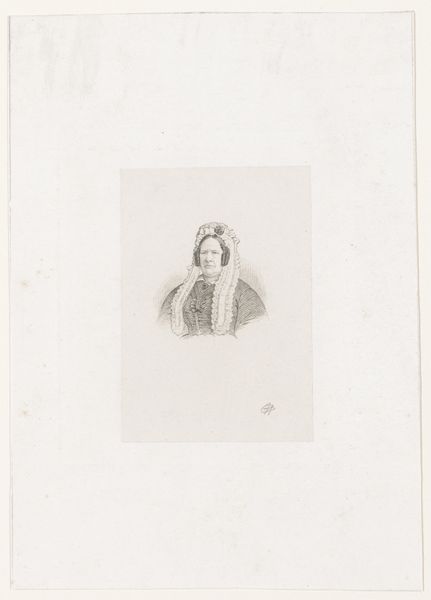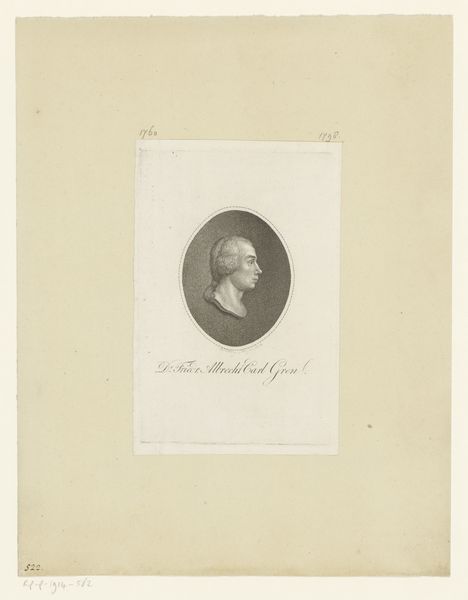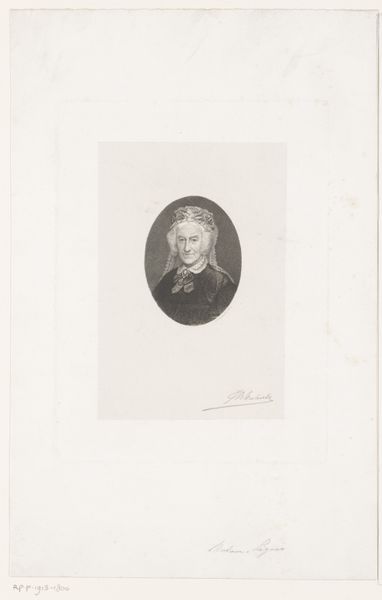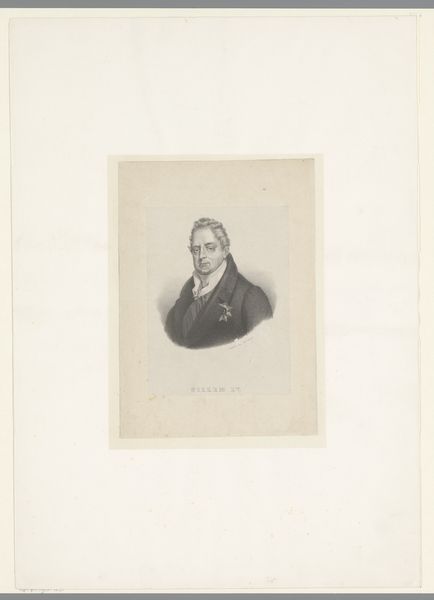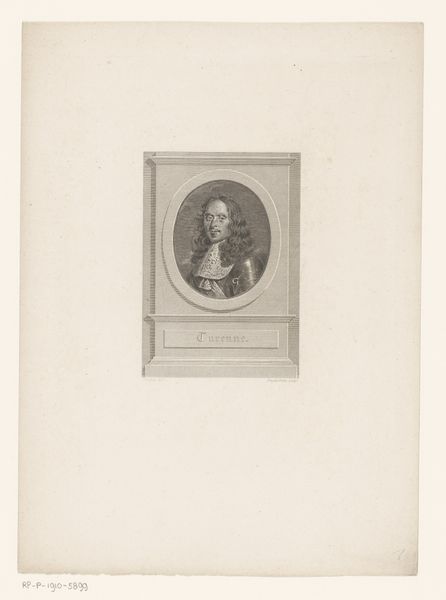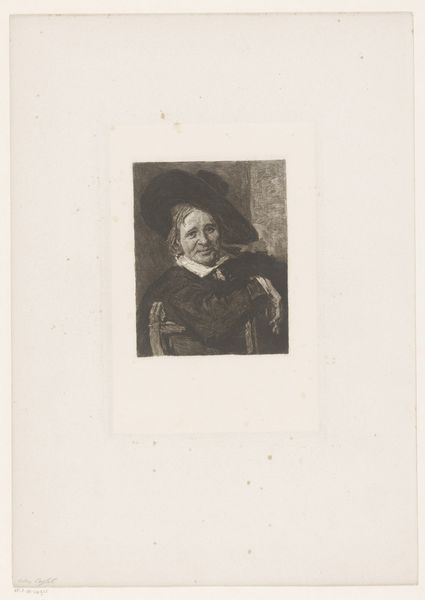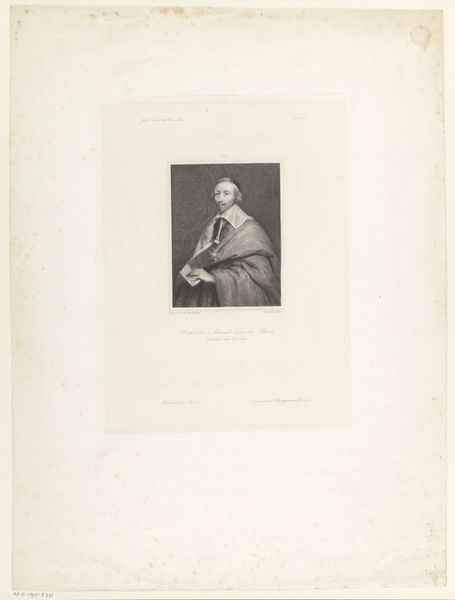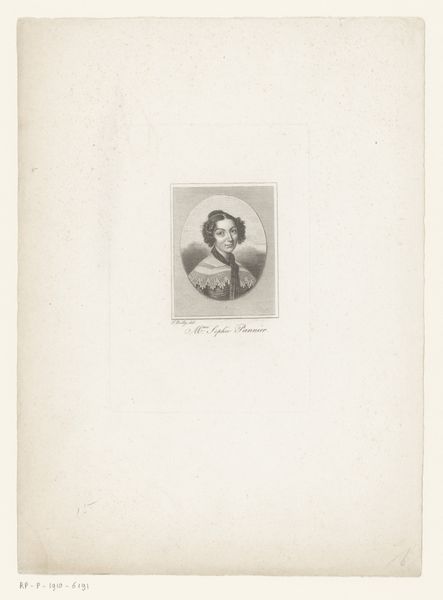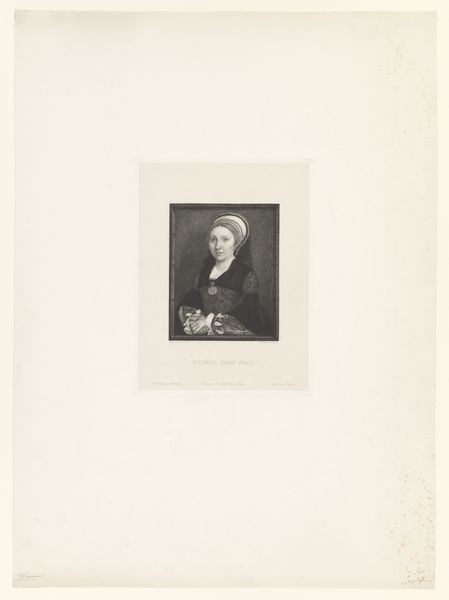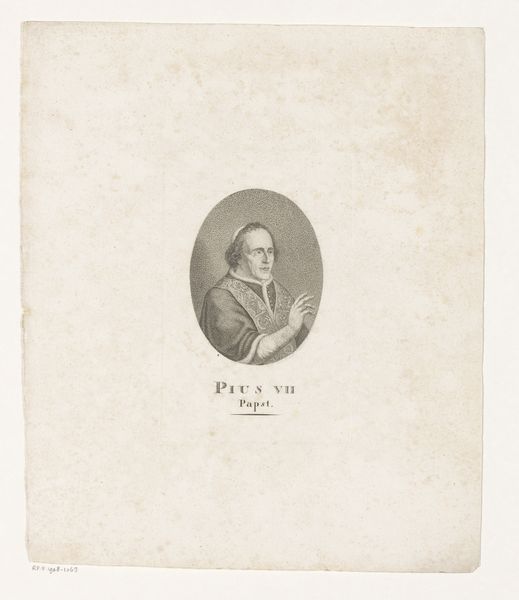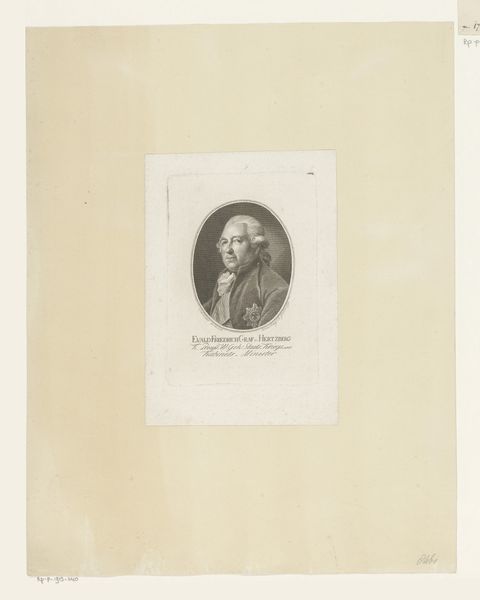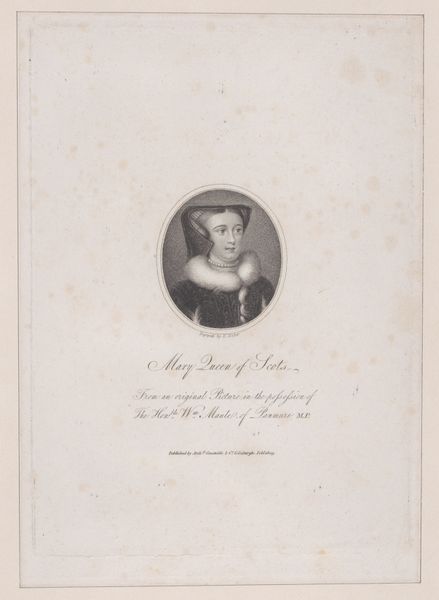
Dimensions: height 119 mm, width 91 mm
Copyright: Rijks Museum: Open Domain
Curator: The delicacy of this print really strikes me. It's titled "Portret van Philippine Welser," made sometime between 1808 and 1874 by Johann Nepomuk Passini. An engraving on paper. What are your first thoughts? Editor: Aloof, contained…almost pressed into existence. She feels like a figure in a story more than a breathing person. It’s interesting that you said print – it contributes to this flattening of her being, in my view. Curator: The story part is definitely key. Philippine Welser, the subject, had quite the history. A commoner who secretly married Archduke Ferdinand II, she navigates that interesting territory between societal expectation and personal desire. Editor: It's written all over her face. Look at her eyes – direct, almost challenging, yet also tinged with melancholy. And her clothing; the fur, the pearl-adorned cap—visual indicators of her elevated status, however contested. The clothing says nobility; her eyes tell a more nuanced story of power and constraint. I wonder about the power dynamics at play when this image was created, long after she lived, especially when her existence threatened a family! Curator: Passini was probably inspired to interpret her place in a time that both celebrated nobility while sidelining certain women from historical accounts, precisely because their rise in social rank disrupted an ingrained status quo. Do you sense, though, that it speaks to universal challenges surrounding identity and ambition even today? Editor: Absolutely. I keep coming back to the almost ghostly quality of the print itself. It’s as if it serves to underscore how even powerful figures like Philippine Welser can be, in a sense, erased or made to conform within particular historical narratives. It makes me wonder about what remains and what's actively repressed in her portrayal. The almost ethereal lines, it's not hyperbole when I say it feels hauntingly pertinent to our experiences with memory in contemporary culture. Curator: Agreed. The quiet elegance of it really draws you in and then, wham, you start considering questions that just amplify beyond its physical size. Editor: Exactly! Thank you, because I didn't feel right until I used "wham" and "ethereal" about the same piece! Curator: Always a pleasure, haha.
Comments
No comments
Be the first to comment and join the conversation on the ultimate creative platform.
